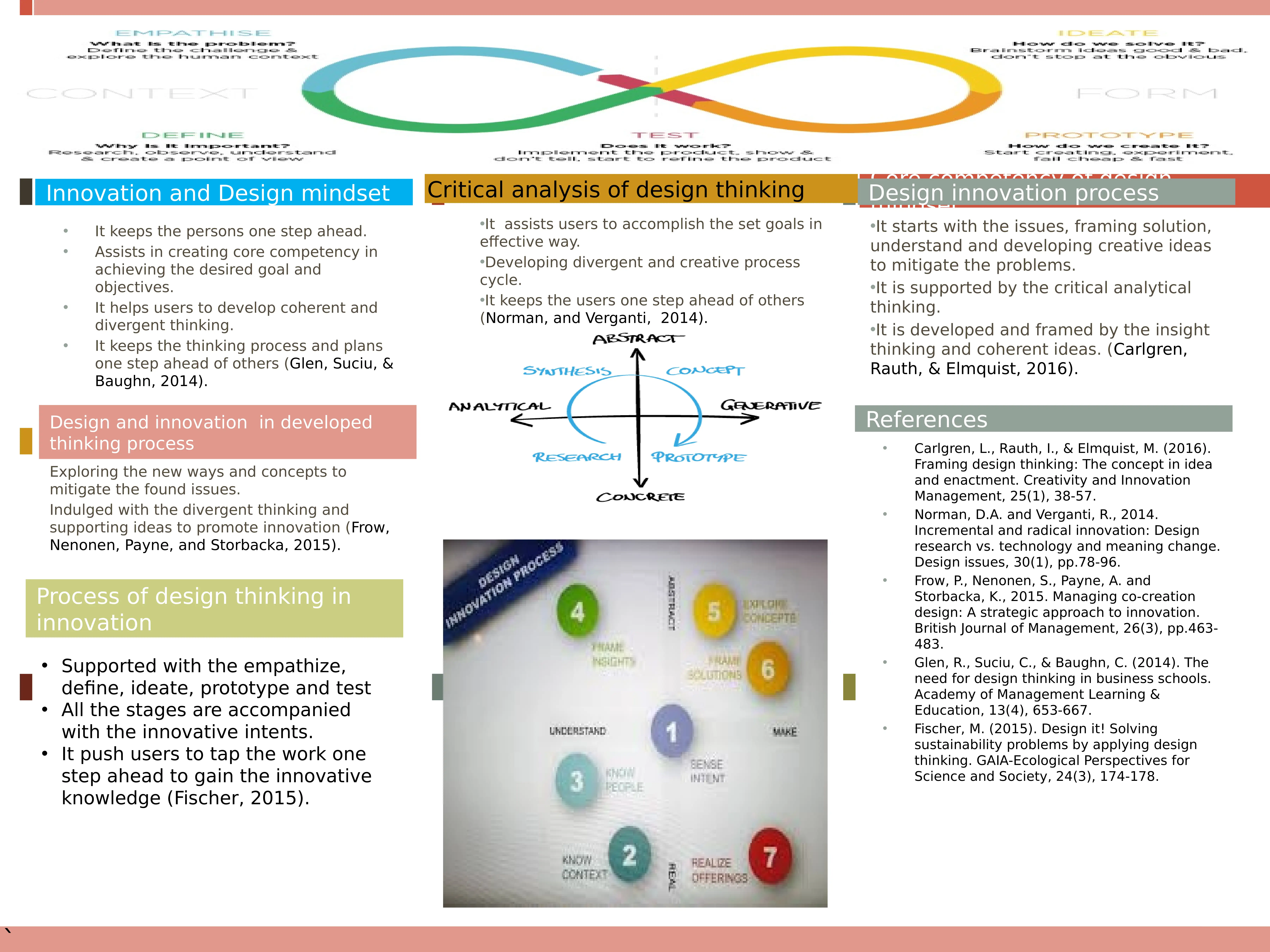Understanding Design Mindset: Innovation Through Visual Research
VerifiedAdded on 2023/06/08
|1
|450
|255
AI Summary
This assignment is a poster presentation which visually explores the concept of a 'design mindset' within the context of innovation, based on academic and practitioner literature. It highlights the importance of design thinking in staying ahead, fostering core competencies, and promoting both coherent and divergent thinking. The poster outlines the design and innovation process, emphasizing empathy, definition, ideation, prototyping, and testing, all crucial stages supported by innovative intents. It critically analyzes design thinking's role in effective goal accomplishment, creative process development, and maintaining a competitive edge. The core competency of the design innovation process mindset involves issue framing, solution development, and creative idea generation, supported by critical analytical thinking and coherent insights. The references cited emphasize the importance of design thinking in business and its impact on innovation management.



![[object Object]](/_next/static/media/star-bottom.7253800d.svg)